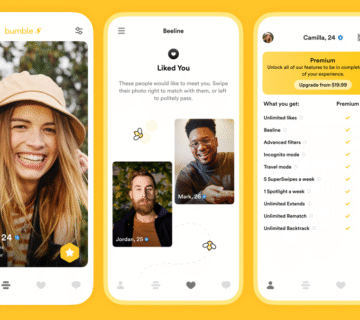In the ever-evolving world of digital dating, language adapts quickly to our new habits and platforms. One term that has surfaced in recent years, especially among Bumble users, is “bumbleing.” This in-depth guide explains the meaning, origins, culture, and classic chat mishaps that make “bumbleing” both relatable and essential for anyone navigating social apps in 2025.
What Does “Bumbleing” Mean?
“Bumbleing” is a modern, informal verb that means using the Bumble dating app, particularly engaging in its messaging, swiping, and matching features. Like “googling” (for online searching) or “tweeting” (for posting on Twitter), “bumbleing” describes browsing profiles, initiating chats, and connecting—or attempting to connect—within Bumble.
But there’s more to the story. The word also playfully nods to the inevitable awkwardness, clumsiness, and unintentional blunders that are part and parcel of digital dating life. Moments when your message doesn’t land, an opener goes awry, or a chat fizzles out—these, too, are all part of “bumbleing”.
The Origins of “Bumbleing”
“Bumbleing” naturally derives from the name of the app itself, Bumble, with the “-ing” suffix to indicate continuous action. Its rise echoes that of other tech-inspired verbs, but also has roots in the older meaning of “to bumble”: to act in a clumsy, awkward, or bungling manner—a fitting double meaning in the context of dating app mishaps.
Classic “Bumbleing” Stories and Chat Mishaps
As “bumbleing” has grown in popularity, so have stories and memes illustrating the bumpy realities of online dating:
-
The Misfired Opener: Who hasn’t sent a message marred by typos, autocorrect fails, or prematurely sent GIFs that missed the mark? Instead of sparking a romantic encounter, these blunders often lead to unexpected laughter or confusion.
-
The Awkward Silence: A conversation starts with promise, fizzles unexpectedly, and leaves one party wondering if they misread the vibe. Even without read receipts, that “ghosted” feeling is all too familiar.
-
The Over-Enthusiastic Chatter: An eager string of emojis or a stream of messages can abruptly hit a wall of one-word responses, leaving hope afloat until the chat vanishes into Bumble’s digital ether.
-
Mismatched Expectations: Light banter can be misinterpreted as sarcasm or disinterest, while genuine curiosity might come off as interrogation. “Bumbleing” is rife with such playful misreads, making for stories that everyone can relate to.
Navigating “Bumbleing” with Positivity
Embracing the awkward, bumpy side of “bumbleing” actually makes the app more enjoyable. Accept that missteps—mistyped words, overenthusiastic greetings, or even being unmatched out of the blue—are shared experiences for all users.
-
Proofread and personalize your openers.
-
Leverage Bumble’s prompts, questions, and features to initiate better conversations.
-
Don’t be afraid to poke fun at yourself when a message goes wrong; laughter is the best icebreaker.
-
Understand that not every interaction will lead to romance or friendship—and that’s okay.
The Psychology Behind “Bumbleing”
Communication experts point out that digital chat is full of ambiguous signals, and “bumbleing”—in all its fumbles—reflects the universal human experience of navigating uncertainty and nonverbal cues online. By embracing your own moments of awkwardness and recognizing them as common, you reduce anxiety and keep the process pressure-free.
Tips to Avoid Common “Bumbling” Pitfalls
-
Be mindful when typing: Slow down to avoid classic autocorrect fails.
-
Start with substance: Reference something from their photos or profile for a unique opener.
-
Use humor to deflate awkward moments: Turning a typo into a joke keeps conversation lively.
-
Remember that it’s all temporary: An awkward exchange today is tomorrow’s funny story.
Read More: Best Tips for Following Up When Your Bumble Message Gets No Reply (2025 Guide)
Conclusion
“Bumbleing” isn’t just about using the Bumble app—it’s about embracing the learning curve, the gaffes, and the hilarity that comes from putting yourself out there. Far from being a negative, “bumbleing” highlights the shared laughter, growth, and storytelling at the heart of digital dating culture in 2025. So next time you bumble a chat, remember: you’re not alone, and it just might lead to your best Bumble story yet.






[…] Read More: What Is “Bumbleing”? Understanding the Term and Stories of Bumble Chat Mishaps (2025 Gui… […]